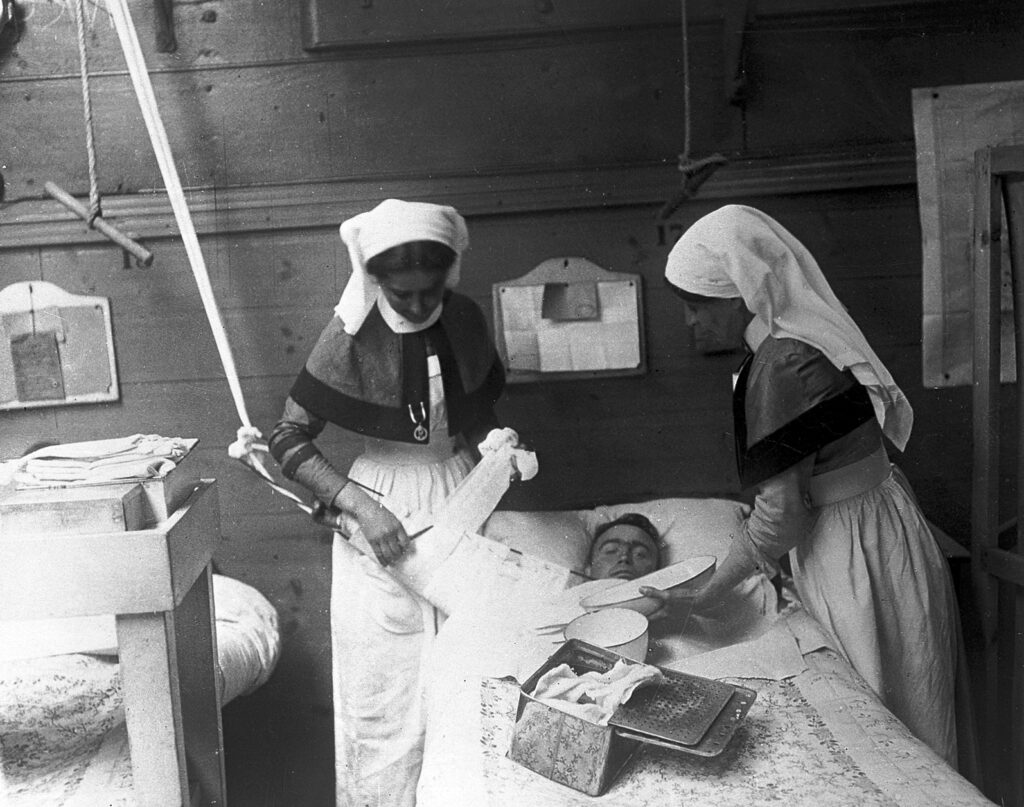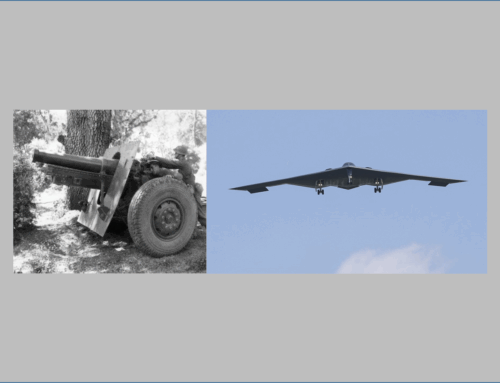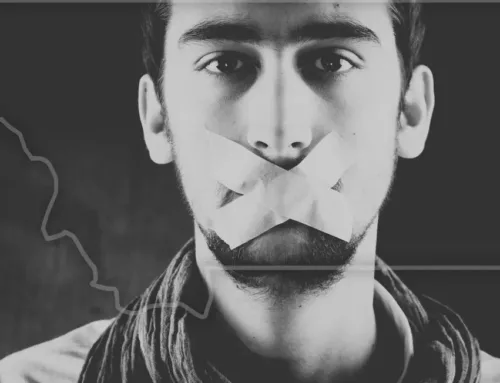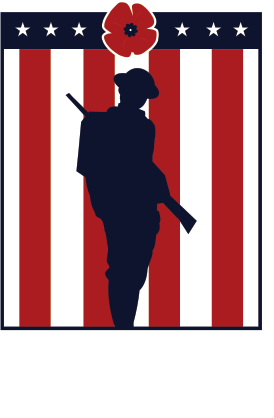The hidden stories of the First World War
Published: 20 February 2025
By Lucy Steeds
via the Historical Writers’ Association website
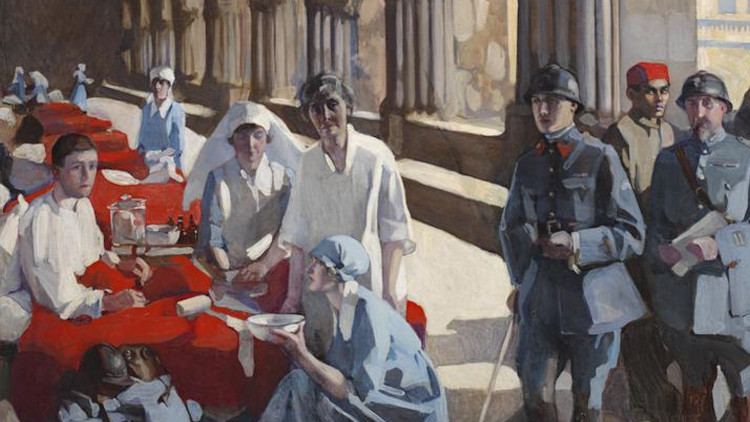
WWI-nurses-cloister-750
When Lucy Steeds was researching her debut novel, The Artist, she realised that writing about art in the 1920s was impossible without an understanding of how the First World War had left its mark — physical or mental — on everyone who lived through it. One powerful source was nurses’ testimonies. Here she writes about the hidden stories of suffering — and excitement — she found.
A message, written on somebody’s skin: “lesion to upper thigh, wound infected”. The message would have been read by a volunteer nurse who stood in the vaulted room of what had once been a hotel, or perhaps a convent, or a chateau, but which was now a hospital.
At the outbreak of World War One, makeshift hospitals were set up across France and Belgium to care for the new influx of wounded soldiers. Volunteers — some with medical backgrounds, others with nothing — were given nurses’ uniforms.
Medical centres were cobbled together out of schools, inns, and churches. “The building in which we worked was a large Roman Catholic College; the principal and professors were still living in it,” records one nurse; blood and chloroform amongst the Latin primers.
Just as these hastily-assembled medical institutions were improvised, so were their processes: “Using the patient as his own medical record pathological findings, treatment details, and diagnoses were often written on his skin in indelible ink.” Each new arrival was a puzzle to decipher, his skin the record of his pain.
To find these stories — and many other perplexing, surprising ones like it — I dug deep into the archives of nurses’ testimonies from WWI.
Women travelled to every country where soldiers were fighting, many of them travelling abroad for the first time, and began lives that were previously unimaginable to them. The world itself was unimaginable, and a new one was taking shape around them in the form of brutality and bloodshed and some of the most viscerally traumatic injuries seen in warfare.
To find these stories — and many other perplexing, surprising ones like it — I dug deep into the archives of nurses’ testimonies from WWI.
Women travelled to every country where soldiers were fighting, many of them travelling abroad for the first time, and began lives that were previously unimaginable to them. The world itself was unimaginable, and a new one was taking shape around them in the form of brutality and bloodshed and some of the most viscerally traumatic injuries seen in warfare.
→ Read the entire article on the Historical Writers’ Association website here:
External Web Site Notice: This page contains information directly presented from an external source. The terms and conditions of this page may not be the same as those of this website. Click here to read the full disclaimer notice for external web sites. Thank you.
